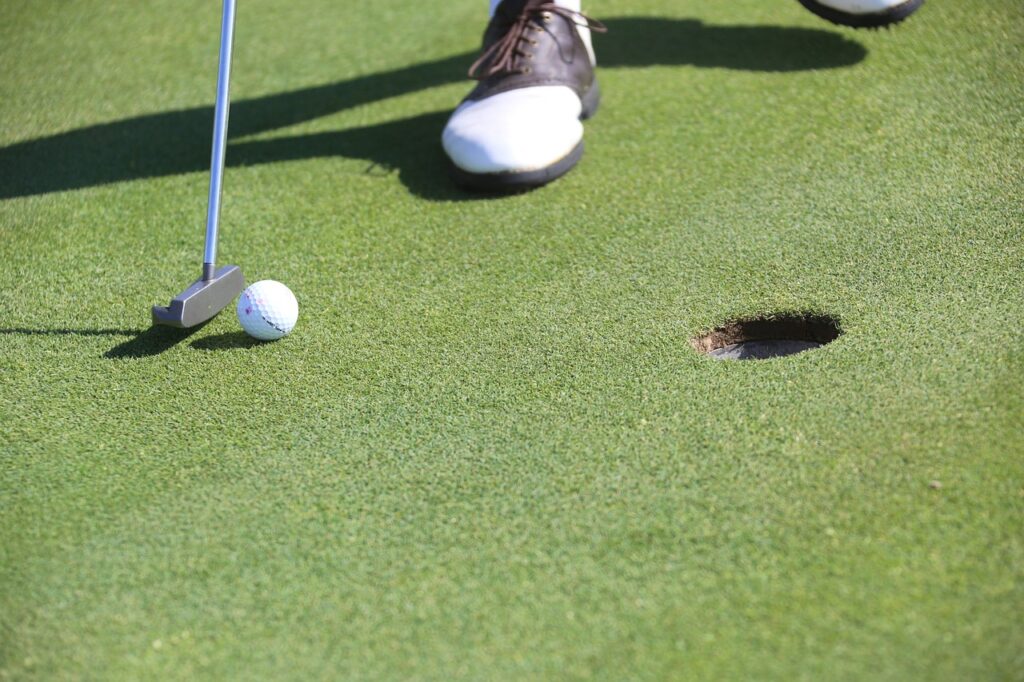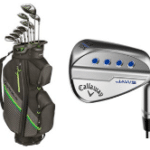How to choose the right putter is not an easy decision but when it comes to improving your golf game, selecting the right putter is essential. The putter is the club you rely on to make accurate and consistent strokes on the greens, ultimately determining your success in sinking those crucial putts.
This guide will provide you with valuable insights and practical tips to help you navigate the vast array of choices and select the right putter that aligns with your unique preferences, stroke style, and playing conditions.
With the right putter in hand, you’ll be well on your way to mastering the art of putting and lowering your scores on the golf course.
9 Easy Methods On How To Choose a Right Putter:
I have tried my level best to walk you through these 9 essential factors to consider when selecting a putter, helping you make an informed decision and improve your putting game.
1: Choosing a putter based on your putting style:
The first thing you need to consider when choosing a putter is your putting style. There are three main types of putter styles: face-balanced, toe-balanced, and heel-toe-balanced.
If you have a straight-back, straight-through putting stroke, you should choose a face-balanced putter. Face-balanced putters have their center of gravity aligned with the shaft axis, which creates little to no toe hang. They are best suited for golfers who have a straight-putting stroke.
If you have an arced putting stroke, you may want to consider a toe-balanced putter. Toe-balanced putters have their center of gravity aligned with the toe, which creates more toe hang. They are designed to help golfers who have an arced putting stroke.
2: Putters and weight distribution:
The weight distribution can greatly impact how the putter performs. If you want a putter that is easier to control and provides more consistency, a heavier putter may be a good option. The added weight helps to stabilize the putter during the putting stroke, which can help to reduce the number of mishits.
If you want a putter that is easier to control and provides more feel, a lighter putter may be a good option. The lighter weight can help you to better feel the club head during the putting stroke, which can lead to more consistent putts.
3: Putter alignment aids: How To Choose the Right Putter
Another important factor to consider when choosing a putter is alignment aids. Alignment aids can help you to better line up your putts and improve your accuracy.
Some putters have alignment lines on the top of the clubhead, while others have a small notch or line on the back of the clubhead. Some putters have both types of alignment aids.
When choosing a putter, you should try out different alignment aids to see which one works best for you. Some golfers prefer a single line on the top of the putter, while others prefer two or three lines.
4: Putter grip size and shape: How To Choose a Right Putter
The size and shape of the putter grip can also greatly impact your putting performance. The most common putter grip shapes are pistol, oversized, and rounded.
If you have smaller hands, you may want to consider a pistol-style grip, which is narrower and more suited to smaller hands. If you have larger hands, you may want to consider an oversize grip, which is wider and more suited to larger hands.
If you have arthritis or joint pain, you may want to consider a rounded grip, which can help to reduce stress on your hands and wrists during the putting stroke.
5: Putter material: How To Choose the Right Putter
The material of the putter can also impact how it performs. The most common putter materials are stainless steel, carbon steel, and aluminum.
Stainless steel putters are the most common and are known for their durability and low maintenance. Carbon steel putters often have a softer feel and provide more feedback, but are more expensive and require more maintenance. Aluminum putters are lightweight and can provide a better feel, but are less durable than stainless steel and carbon steel putters.
6: Budget considerations: How To Choose the Right Putter
When choosing a putter, you should also consider your budget. Putter prices can range from less than $50 to several hundred dollars. While a more expensive putter may have more features and better performance, a less expensive putter may still provide good performance at a lower cost.
7. Determine Your Putting Style: How To Choose the Right Putter
Before choosing a putter, you need to determine your putting style. There are two types of putting styles: straight back, straight through (SBST), and arc. SBST putters are best suited for golfers who have a straight putting stroke, while arc putters are ideal for those who have an arc in their stroke. Determine your putting style by taking a few practice strokes and observing your stroke.
8. Consider the length: How To Choose a Right Putter
Shape Choose the Right Head Putters come in different head shapes, and each shape has its advantages and disadvantages. The most common head shapes are blade and mallet. Blade putters are narrow and have a small sweet spot, while mallet putters are more forgiving and have a larger sweet spot. and personal preferences when choosing the head shape.
9. Consider the Alignment: How To Choose a Right Putter
Consider the Alignment Aid Many putters come with an alignment aid, which can help you align your shot correctly. Some putters have a line on the top of the head, while others have a dot or other shape. Choose an alignment aid that suits your style and helps you aim correctly.
Conclusion: How To Choose a Right Putter
How to the right putter is vital if you want to be a successful golfer. When choosing a putter, you should consider your putting style, weight distribution, alignment aids, grip size and shape, and budget. By considering these factors, you can find the right putter that will help you to improve your putting performance and lower your scores.
Choosing the right putter can make a significant difference in your golf game. Consider your putting style, length, head shape, weight, and alignment aid when choosing a putter. Remember to take your time and try out several putters before making a final decision. With the right putter, you can improve your game and become a better golfer.
FAQs: How to Choose a Right Putter:
- What factors should I consider when choosing a putter? Choose based on your putting stroke (arc or straight), feel preference (soft or firm), and alignment aids (lines, dots).
- Should I choose a mallet or blade putter? Mallets offer more forgiveness and stability, while blades provide better feel and control for precise putting strokes.
- How important is the putter’s length? Option for a length that promotes a comfortable stance and allows your eyes to be directly over the ball at address.
- What role does putter head weight play? Heavier heads can smooth out the stroke, while lighter ones might enhance feel and increase swing speed consistency.







